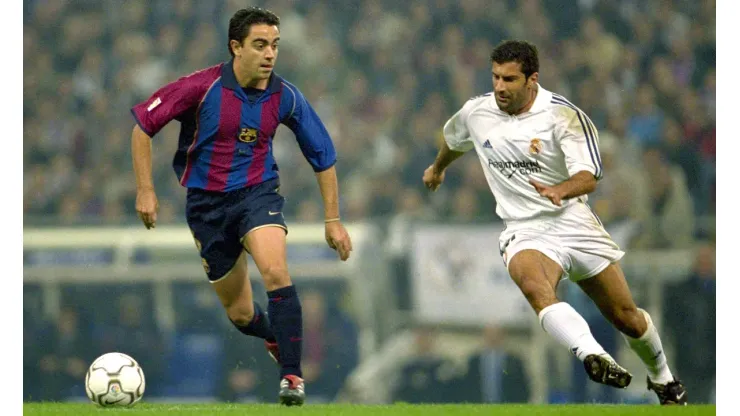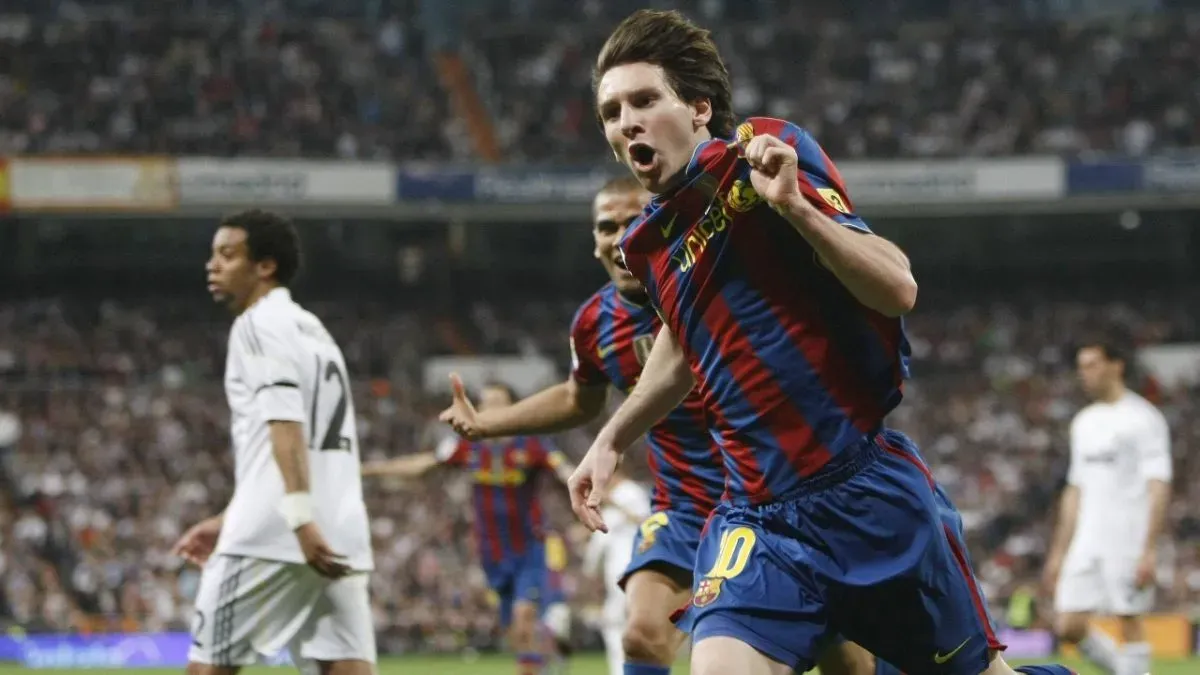Soccer owes much of its essence to derbies. Within the realm of the sport, there exist very few matches that can rival the intensity and fervor of this rivalry. Hence, let’s dive into the History of El Clásico.
The story behind this globally renowned matchup delves much deeper than a simple gathering of players on the pitch in front of passionate fans in massive stadiums. This monumental clash involving Barcelona and Real Madrid has evolved into a representation of regional pride, political strains, and an unparalleled rivalry.
In certain instances, soccer rivalries become emblematic of a nation’s finest qualities. In Spain’s context, this derby stands as the unequivocal flagship event, surpassing even the most prestigious cup finals.
Barcelona proudly represents Catalonian independence and the region’s distinct culture. The club is renowned for its revered youth academy, La Masia, and its adherence to the style introduced by Johan Cruyff in the late 1980s, known as ‘Tiki-taka’.
Conversely, Real Madrid boasts connections to Spain’s royal family and a reputation for signing the world’s most expensive soccer players and rising stars.
How their rivalry came to be
Barcelona were established in 1899, followed by Real Madrid three years later in 1902. It was in this later year that the inaugural El Clásico took place, as a part of the ‘Concurso Madrid de Foot-Ball Association,’ which is better recognized as the Copa de la Coronación, though it was an unofficial competition.
In this encounter, Barcelona emerged victorious with a 3-1 win over Madrid. However, they later succumbed in the final to a Basque team, somewhat resembling today’s Athletic Club.
Most of the initial encounters between these two teams were categorized as friendlies, owing to the absence of a professional soccer division at the time, with the only national competition being the Copa de España. It was only with the inception of La Liga in 1928 that their encounters became more frequent and competitive.
Our Pick:Includes: Bundesliga, LaLiga, FA Cup, & More |
|
Clearly, given the stature of these two clubs and the economic and cultural impact of their respective cities, it’s not unexpected that they emerged as the foremost figures in their nation. When you have the same pair of teams competing for titles and trophies season after season, rivalry naturally develops.
However, it was only when external factors came into play that the bitterness between Barcelona and Real Madrid genuinely reached new heights.
When politics gets involved
The intensity of El Clásico finds its origins beyond the realm of soccer. It is in the political and cultural landscape of mid-20th century Spain that this rivalry truly ignited, brimming with the passion and fervor befitting one of the greatest sporting rivalries of all time.
The situation was difficult during the Spanish Civil War (1936-39) and the political climate surrounding it in the years leading up to and following. Thus, supporting one of these two soccer clubs evolved into something more profound than merely watching games and donning the team jersey.
It became a means of expressing one’s ideas and beliefs about the world, a way to unite with like-minded individuals, all rallying behind the colors and emblems of an organization they believed in.
In 1936, the city of Madrid was the base for General Franco and his right-wing nationalist militia, which aimed to quell the aspirations for independence in the Basque and Catalan regions. After a three-year-long Spanish Civil War, Franco emerged victorious and, for nearly 40 years, employed brutal tactics such as murder, torture, and political coercion to suppress Catalan culture, as documented by Duke University.
Moreover, he utilized soccer as a propaganda tool for his regime. In 1939, Franco compelled FC Barcelona to alter their name to the Spanish equivalent, Barcelona CF, as a symbolic gesture to demonstrate that Catalan society would not be tolerated.
Four years later, Franco issued threats to the Blaugrana’s players ahead of a cup match against Los Blancos, which they ultimately lost by a staggering score of 11-1.
Therefore, backing either Real Madrid or Barcelona wasn’t merely about supporting a soccer team; it equated to aligning with a political and cultural movement. What it represented to the people of that era extended far beyond a 90-minute contest between white lines and goalposts.
Why is it called El Clásico?
Real Madrid and Barcelona have crossed paths on numerous occasions in the course of their history. Surprisingly, the term ‘El Clásico’ was applied to this encounter only in recent times.
It only gained prominence at the turn of the 21st century, coinciding with the escalating significance of the clash between La Liga’s two most illustrious clubs. Before that period, the duel was typically known as ‘El Derbi’ [The Derby], or even more simply, as ‘Madrid-Barca’ or ‘Barca-Madrid’.
The adoption of ‘Clásico’ in Spain is believed to have drawn inspiration from South and Central America, where the term is commonly employed to describe derby matches or encounters between rival teams.
Long-standing battle for best players
Disagreements over player signings, such as the fierce battle for Alfredo di Stefano’s signature in the 1950s, and contentious refereeing decisions only added fuel to the rivalry. In the 20th century, both clubs also boasted the era’s finest players, with Barca featuring talents like László Kubala and Luis Suarez, while Real Madrid had stars like Ferenc Puskas and Di Stefano.
Alfredo Di Stefano is widely recognized as the Whites’ legend who played a pivotal role in leading them to numerous European triumphs. However, the course of history could have taken a dramatically different path if not for the significant confusion in South America following a players’ strike.
The Catalan giants had previously reached an agreement with River Plate and even arranged for Di Stefano and his family to fly to Catalonia, believing they had secured the services of the world’s most renowned player. The legendary Argentine forward even played in a few friendly matches with the blue and garnet colors.
However, their arch-rivals saw an opportunity and made a bold move. It was a dispute between the Argentines and the Colombian side Millonarios over the player’s rights that allowed Madrid to step in and secure his signing. The ramifications of this episode would resonate for years to come.
The intensity of the rivalry between Barcelona and Real Madrid, rooted in their completely opposing political ideologies, is most prominently displayed through their passionate fan base. While there have been occasional player transfers between these two giants, such moves are exceptionally rare.
In addition, players who undertake such transfers often face severe backlash from their respective sets of supporters. Moving to a rival outfit is strongly discouraged and is met with strong disapproval from the fans.
Indeed, the case of Luis Figo provides a striking example of the rivalry’s intensity. Figo, a brilliant winger during his time with Barcelona, was adored in Catalonia and enjoyed legendary status at the club. However, the situation took a dramatic turn when a Real Madrid presidential candidate in 2000, Florentino Perez, made a campaign promise to sign him.
To the astonishment of many, Perez emerged victorious in the election, and Figo was contractually bound to move to the Spanish capital. His return to Camp Nou was unforgettable as he was met with jeers, profanities, and a barrage of objects including bottles, debris, coins, cell phones, and famously, even a pig’s head. It remains an iconic moment in the history of this fierce rivalry.
Messi vs Ronaldo era
Despite not being a geographical derby, the Clásicos of the past two decades have been played with a level of intensity that often feels like it’s on the verge of boiling over. These matches have been laden with subplots and an abundance of superstar talent.
This surge in recognition can be attributed to numerous individual clashes. Such was the intense rivalry between managers Pep Guardiola and Jose Mourinho, as well as the iconic battle between Lionel Messi and Cristiano Ronaldo.
The showdown between the two modern soccer ‘GOATs’ was undoubtedly the main attraction as the world eagerly watched to determine the supreme deity in the realm of the beautiful game. Fittingly, two of the greatest players in the history of the sport found themselves on opposing sides of the Clásico rivalry during their prime years.
In terms of El Clásico appearances, the Argentine holds the edge, having played in 45 matches compared to Ronaldo’s 30. Messi also claims the record for most goals in this fixture, with 26 to his name, while Ronaldo has notched 18, a tally he shares with the legendary Alfredo Di Stefano.
The Portuguese also boasts the record for the best goalscoring streak in the history of the derby, scoring in six consecutive fixtures in 2012, netting a total of 7 goals during that span. However, it’s Messi who holds the record for hat-tricks in this rivalry, having achieved that feat on two occasions against Real Madrid. Ronaldo, on the other hand, managed two braces against Barcelona for Real Madrid but was never able to secure a hat-trick.
Real Madrid vs Barcelona History: Head to head, and trophies
Barcelona’s recent period of dominance has seen them surpass their rivals in terms of their total trophy collections (77 vs 69). However, Real Madrid maintains a significant lead in La Liga, having won 35 league championships, which is a Spanish record and is eight ahead of Barcelona. They also lead the way in the UEFA Champions League with 14 titles compared to the Blaugrana’s five.
In addition to their Champions League successes, Real Madrid have also won the UEFA Cup (now the Europa League) twice. Meanwhile, Barcelona stands out as the most successful team in the now-defunct UEFA Cup Winners’ Cup, having won it four times.
Over the last century, these two sides have faced each other 296 times in various competitions, including La Liga, the Copa del Rey, and the UEFA Champions League. When considering the head-to-head record of competitive meetings, Barcelona currently holds the bragging rights with 124 El Clásico wins, while Real Madrid has triumphed 108 times, and there have been 64 draws.
Photos: Imago
200+ Channels With Sports & News
- Starting price: $33/mo. for fubo Latino Package
- Watch Premier League, Women’s World Cup, Euro 2024 & Gold Cup
The New Home of MLS
- Price: $14.99/mo. for MLS Season Pass
- Watch every MLS game including playoffs & Leagues Cup
Many Sports & ESPN Originals
- Price: $10.99/mo. (or get ESPN+, Hulu & Disney+ for $14.99/mo.)
- Features Bundesliga, LaLiga, Championship, & FA Cup
2,000+ soccer games per year
- Price: $5.99/mo
- Features Champions League, Serie A, Europa League & Brasileirāo
175 Premier League Games & PL TV
- Starting price: $5.99/mo. for Peacock Premium
- Watch 175 exclusive EPL games per season








